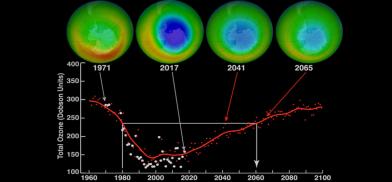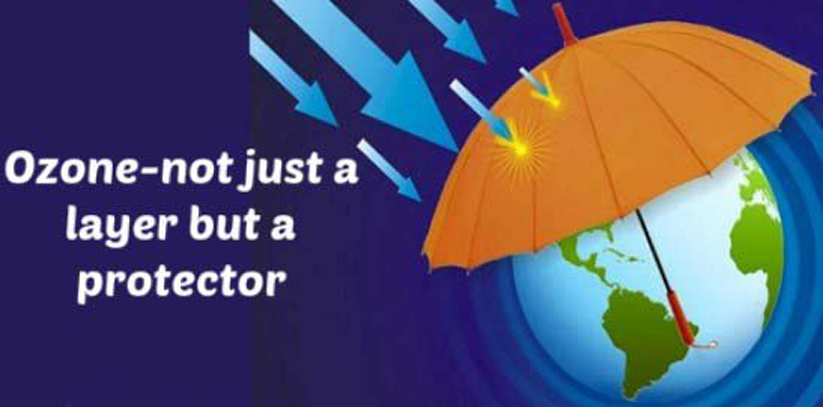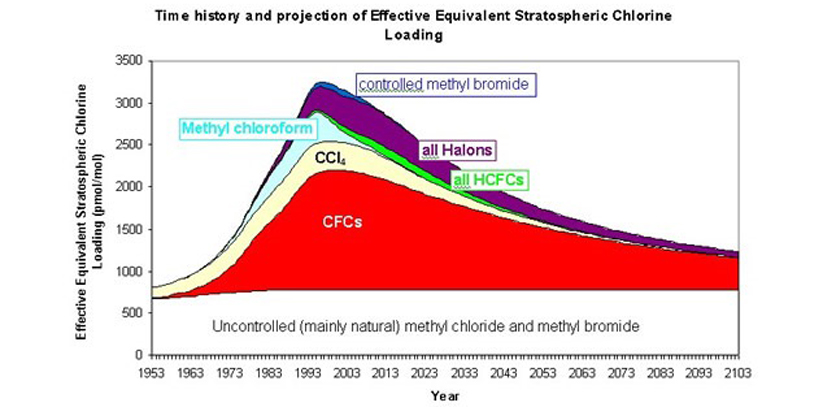UN should catalyse global action to address the global pandemic
If the UN can demonstrate a successful example of the global treaty that avoided the calamity at the planetary level, why not the same UN cannot use its convening power to address the global pandemic? writes Rajendra Shende for South Asia Monitor

The world successfully flattened the rising curve of planetary-scale threats that could have compromised the life on the earth. Before it took a toll, the impending catastrophe was neutralized. The rising curve of the risk was flattened before it struck. And that curve has not seen the ‘second wave’ yet. Are we ready to learn the lesson?
It was the decade of the 1970s. A dozen men had already landed on the moon. There was an exhilarating mood all around mainly in the developed countries. ‘Sky is not the limit,’ scientists and technocrats boasted. The doors of the universe can now be commanded from the control room on the earth to explore the unknowns, thought superpowers with their cliched fist.
Then came the bombshell. Scientists from the USA and Europe who were literally policing the atmospheric traffic of chemicals in the skyways observed that certain man-made chemicals have shocking potential to attack the Stratospheric Ozone Layer which is the formidable shield for life on the earth. The ozone layer halts the harmful ultraviolet radiation from the sun reaching the earth. That was the first alarm by scientists Mario Molina, F. Sherwood Rowland and Paul Crutzen about the possible impending crisis on a global scale.

Warning bells
Remember the alarm raised by American business magnate, software developer, and philanthropist Bill Gates on approaching pandemic on TED talks in 2015? The world was too busy with profiting from the rising Dow Jones index and hence took it as ‘yet another’ health-related nudge. Remember Dr. Li Wenliang of Wuhan hospital, who raised the alarm about the coronavirus in the early days of the COVID-19 outbreak? He tried to send a message to fellow medics about the outbreak before pandemic broke loose globally. Chinese police told him to stop spreading rumours. The important elections were taking place in that Chinese province and political leaders did not want to create chaos. Li did shut up and died soon after; Bill Gates' warning went in oblivion. But not the CORONA virus, SARS-CoV-2.
All hell broke loose when scientists raised the alarm that man-made chemicals will destroy the ozone layer. As a result, they predicted the catastrophe that included a huge rise in skin cancer, loss of immunity, blindness due to cataract and above all the loss of crops on the land and fish in the oceans. At that time it was the cluster of industry leaders, the producers of Ozone-depleting Chemicals, who did not want to create chaos amidst their profit-making business. But scientists did not stop. After nearly 50 years the ozone layer depletion did.

Role of UNEP
The active role played by of United Nations Environment Programme (UNEP) in convening the countries and the scientists to assess, observe, evaluate, and verify the warnings given by the scientists triggered the actions. Alarm and predictions in mid of the 1970s, proved far worse in the 1980s when the scientists actually observed a huge loss of ozone over the Antarctic. That came to be known as ozone ‘hole.’
The scientists then were able to conclusively prove the link between the ozone hole and emissions of man-made ozone-depleting substances (ODS), particularly chlorofluorocarbons (CFCs). It was clear that if no action is taken the ozone depletion would spread overall the latitudes of the earth, not just in the poles.
Under the authoritative assessment of the observation by UNEP and the World Meteorological Organization, the countries agreed to take time-targeted actions to eliminate the production and consumption of the world of the ozone-depleting substance over.
Montreal Protocol
The political declaration of intent agreed in 1985 called Vienna Convention for Protection of the Ozone Layer. The multilateral environmental treaty, the Montreal Protocol on the Substances that Deplete the Ozone Layer was signed in 1987. Developing countries successfully negotiated the financial and technological assistance arguing that most of the damage to the ozone layer was due to industrial activities originated from the developed countries and they have the capacity to provide such assistance . The protocol later became a universal treaty. All the 196 member states of the United Nations ratified the Protocol.
Thirty-five years after the Vienna Convention and 33 years after the Montreal Protocol, the world witnessed that the country after country shutting down the manufacturing facilities of nearly 2 million tonnes per year of chemicals that were eating out the ozone layer like new coronavirus is attacking the cells of the respiratory tract and lungs of humanity. More than 98 percent of consumption of such chemicals are now assigned to history books of chemistry and that too as per the specified time in the protocol. India and China met their targets before the protocol’s deadlines. Small countries like Bhutan, who had a consumption of few Kg per annum, too, stopped their consumption in time and replaced with newly developed and existing alternatives. The rising curve of ozone depletion has been flattened. The ozone layer is set on the path of recover - that was a feat acclaimed by all including the United Nations, who in its 2007 report to General Assembly said, “…..Montreal Protocol ..demonstrates what can be achieved when countries act together and in a concerted way to resolve global environmental problems”. Surely it applies to global health issues as well.
UN report states that more than 250 million cases of skin cancer and almost 50 million cases of cataracts will have been averted by the end of the 21st century as a result of concerted global action to recover the ozone layer. ‘Acting together’ rather each nation having its own strategy is the key lesson for COVID-19.
Additionally, there was a singularly significant but the unintended bonus of such a global environmental movement. CFCs and some of the other ozone-depleting chemicals are also potent and thousands of times more global warming than carbon dioxide. By 2010, this ozone-depleting and green-house-gases (GHGs) avoided about 15 Gigatonnes (Gt) of equivalent CO2 emissions annually.
This is much more than the 2 Gt per year that were targeted but never met by the Kyoto Protocol by 2012. Kofi Annan, former United Nations Secretary-General went on to state in his famous report ‘ We the people: the Role of the United Nations in the 21st century,’ “ Perhaps the single most successful international environmental agreement to date has been the Montreal Protocol, in which states accepted the need to phase out the use of ozone-depleting substances.”
World must come together to make common cause
Another lesson for COVID-19 is when the world comes together to fight a common cause, there are always co-benefits. Success breeds success and even more success. The countries in 2016 decided to correct the necessary mistake they committed while eliminating CFCs. The alternative hydrofluorocarbons(HFCs) were deployed as part of the alternatives to eliminate CFCs as they were ozone friendly but not climate-friendly. The global warming potential of some of the HFCs was tens of thousands of times more than carbon dioxide.
After extensive debate protocol parties decided to phase down the use of HFCs as well in stages with clear targets. The Montreal Protocol thus became the only climate change treaty today that is working and has agreed on the timetable with full incremental cost assistance to the developing countries. Global success encourages innovation, is another lesson for the world fighting COVID-19.
The protocol continues to keep a close eye through atmospheric observations and their impacts on the ozone layer. The possibility of ‘second wave’, to use COVID-19 terminology, of ‘ozone depletion pandemic’ is distant but not impossible. Indeed, the dangerous instances of restarting of small quantities of CFCs (Chlorofluorocarbons) production and consumption in China have been noted from the atmospheric observation over the last few years. Though they do not match with the observed increase in atmospheric concentration, the investigation is on-going.
Leaks from already stored CFCs, by-product-HFCs from the manufacture of legally allowed chemicals, and illegal trade are potentially minacious issues that could jeopardize the success of the protocol. These issues are being debated in the protocol's global meetings with full transparency. The provision of such an open and democratic mechanism to address the aberration in the success of the protocol itself is considered as one of the drivers of the successes of the ozone treaty.
There is a growing need for chemical inspectors to check and verify the data submitted by the countries under the Montreal Protocol as is done under the United Nations Organization of Chemical Weapon Treaty (OPCW) in The Hague.
UN needs to catalyse global action
Honest and urgent evaluation of early warning signals of global calamity, science and technology-based global collective and corrective actions, financial and technical assistance from developed countries to developing countries, respectful follow-up of open and transparent investigation are the lessons for all the countries engaged in the lethal fight of COVID-19.
If the UN can demonstrate a successful example of the global treaty that avoided the calamity at the planetary level, why not the same UN cannot use its convening power to address the global pandemic? The UN still can catalyze the action and provide the platform to win the war against COVID-19. That would be yet another inspiring lesson to the world from the UN on its 75th anniversary.
(The writer, Chairman TERRE Policy Centre and former Director, UNEP, was the global head of capacity building programme in UNEP to protect the Ozone Layer and the coordinating lead author special report of IPCC-2007 that won the Nobel Peace Prize. The views expressed are personal. He can be contacted at shende.rajendra@gmail.com)









Post a Comment